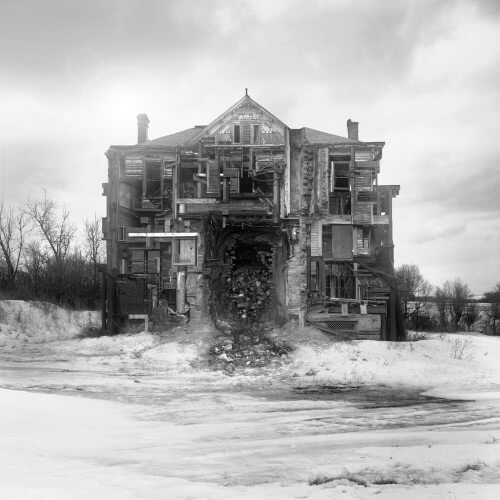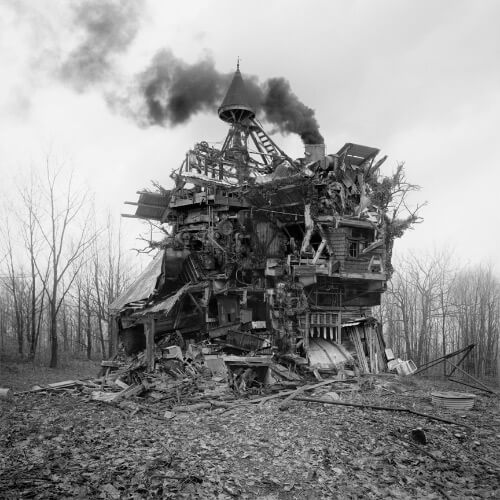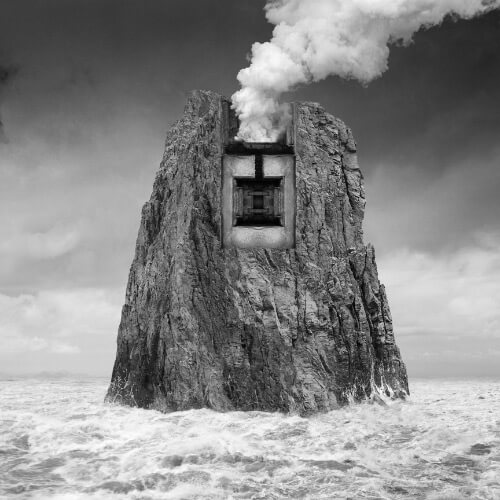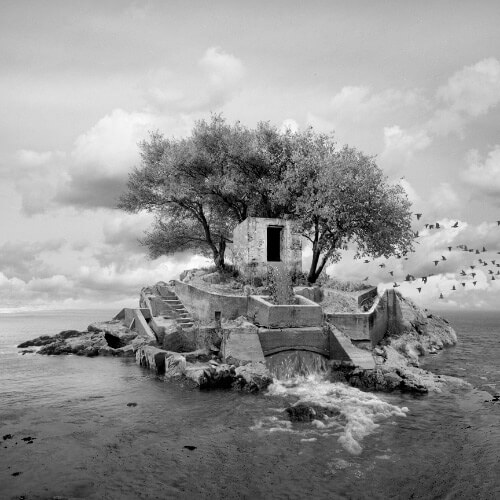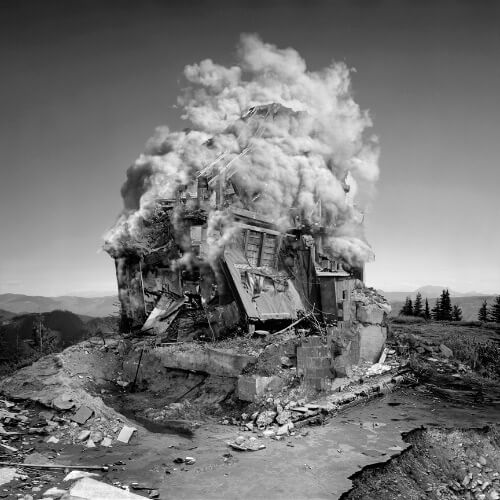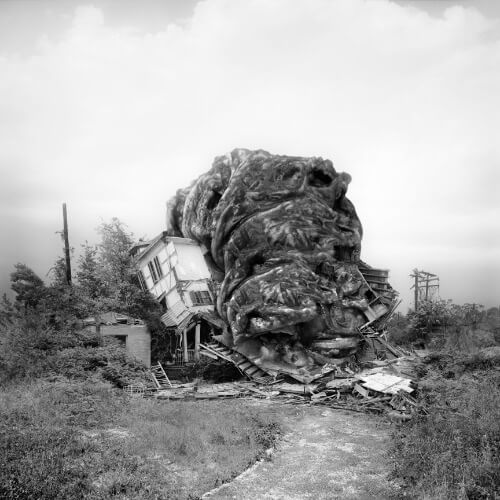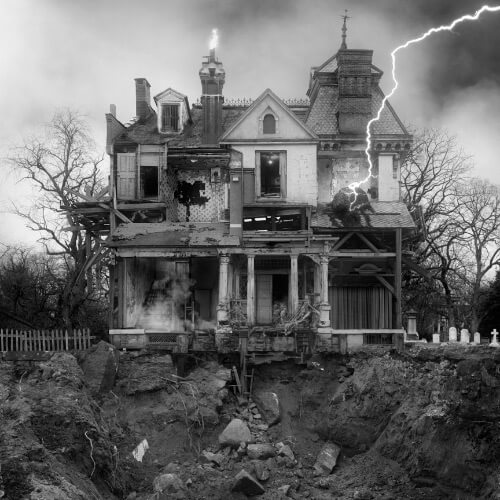Jim Kazanjian contacted us and wanted to show some of his work. I was amazed at what I saw. First off I want to say that it’s not the traditional things you expect to see here at TPA. It’s not photography but instead very skillfully crafted photo-composites that are both haunting and fantastical. Jim was kind enough to share a little bit about his methods and point of view.
My images are digitally manipulated composites made from photographs I find online. Currently, I have a database of over 26 thousand high resolution photos in my collection. The number of found images I work with in a piece can vary from 12 to 30. On the more complex pieces I’ve used upwards of 50. I generally sample sections from photographs I find interesting and use them as building blocks. I assemble these “blocks” together in Photoshop to create a nonexistent space that mimics a photograph. I do not use a camera at any stage in this process.
Generally I prefer to work in a kind of organic way. I start with a vague idea and then let the pieces inform my editing process. Some things fit together well and others do not. It is very similar to solving a puzzle except it gets more difficult as I progress, instead of easier. Most of the time, if I pre-conceptualize the work too heavily, it becomes more of a compromise and forced. I prefer the process to be one of discovery, the final result always seems to be much more effective.
I am interested in how an image can have the potential to unfold and suggest something outside of itself. By this I mean something beyond the obvious and only discovered through a continued process of viewing. It is this act of “looking” that I find fascinating because it does not follow a linear progression like language but is interactive and random.
I’ve focused on photography as a medium because of the cultural misunderstanding that it has a kind of built-in objectivity. This allows me to set up a visual tension within my work, to make it resonate and lure the viewer further inside. My current body of work is inspired in large part by the literature of H.P. Lovecraft and other “weird” fiction writers. I am intrigued with the narrative archetypes they utilize to de-familiarize the familiar. I like to use those devices as a foundation to build upon and generate entry points for my images.
– Jim Kazanjian
